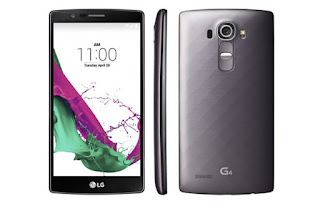The Worlds Most Expensive iPhone 6 Costs $2.7 Million Dollar.
Even though the two new iPhone 6 models are only a few days old, Alexander Amosu already set himself to give the new smartphone an exclusive upgrade.

TOP 5 ANDROID SECURITY APPS.
There’s some debate about whether you really need antivirus apps on your smartphone. Much depends on whether you side load apps, but there’s no denying that malware has grown into a much greater concern so, Luckily security apps have improved dramatically to keep pace with the new threats, so you have plenty of great protection to choose from.

10 best mobile phones in the world today.
OS: Android 5.1 | Screen size: 5.5-inch | Resolution: 1920 x 1080 | RAM: 3GB/4GB | Storage: 16GB/64GB | Battery: 3,300mAh | Rear camera: 13MP |Front camera: 5MP

Wednesday, November 25, 2015
 6:58 PM
6:58 PM
 Unknown
Unknown
Friday, November 20, 2015
 5:18 AM
5:18 AM
 Unknown
Unknown
Don’t Press Anything
Resist the urge to see if it’s still working:
- Don’t turn it on
- Don’t navigate
- Don’t press any keys
- Don’t use the phone
- Remove the battery
- If your phone will allow you to then remove the battery, and cut all the power to the device to decrease the chance of a short.
Remove it from its case
- If you keep your phone in a protective case then dry the outside of the case and then remove it. Try not to rock the phone to much to help prevent water from running into any of the phones ports, plugs, holes, cracks or spread further throughout the inside of the phone.
Take off the removable parts
- If your phone has a SIM card or Memory card then take it out and if necessary set it aside to try as well. SIMs are replaceable if needs be and most memory cards (at least the best memory cards) are waterproof.
- But take them out of the phone and leave the battery cover or back plate off to help with the drying process and allow those parts of your phone to vent.
Dry the phone with a dry towel or cloth
- Dry the outside and any visible areas with a dry cloth or towel. Again take caution not to let any water into the openings of your device if possible.
DO NOT Blow it
- I do NOT recommend air in a can, a blow dryer, or even blowing air through your lips or a straw.
- You might cause heat damage with a blow dryer or adversely blow water into the phone or blow the water around that’s already into the phone and cause more damage.
Do not take the phone apart
- Don’t unscrew the phone or try and open it to get access to the inside of the phone. Even though the LDI (Liquid Damage Indicator) on your phone was most likely activated voiding your warranty, taking the phone apart could void your warranty 100%. So I don’t recommend it except as a last resort.
Dry the phone
- You dried the outside and visible moisture as best as you could with a dry towel but now we have to dry the moisture that you couldn’t get to.
- Use a Vacuum – although blowing the water on the phone is a bad idea, sucking the water off and or out of the phone might not be. Just make sure that you use caution trying not to scratch the phone or create a static charge from the vacuum.
- Use Rice - One of the most common tools for drying phones is uncooked rice. Get an airtight container or zip lock bag and bury your phone in rice. The rice will absorb the moisture and help dry out our phone.
- Silica Gel Packs – If you have any of these cool packets lying around (they are the gel packs you can find in shoeboxes) then these are great at absorbing moisture because that’s what they are meant to do. Place some packets into an airtight container with your phone and wait for them to help dry it out completely. Note: old packets that have already been used will have already reached their absorption capacity and won’t work.
- Phone Drying Pouch – If you planned ahead and bought a phone drying pouch for just this situation then locate it and use it to assist you in drying the phone. If you don’t have one of these nifty packets then you can plan ahead for any future incidents and buy one for next time. These packets are often sold by stores as well (including Wal-Mart) if you want to check online to see if they have any in stock or place your phone in rice in the meantime and then run down to the store and see if you can locate one.
- Wait for the moisture in the phone to dry out completely. If you have another phone that’s the same carrier as your current one you might be able to use that device while your primary phone dries. If your phone uses a SIM card then make sure your SIM is dry and insert it into another phone of the same wireless provider. Or simply take a break from your texting, tweeting, and networking and read a book or browse this awesome website instead /wink.
Check the phone
- After a day or two of allowing the phone to dry check for moisture that might still be in or on the device. If moisture remains evident then do not re-insert the battery or accessories just yet. Continue the drying process with the suggestions above again until the phone is completely liquid and moisture free.
Attempt to power it on
- Try and turn your phone on listening for any irregular noises and listening to make sure that the speakers still work on the unit. Check the screen and make sure that it appears to be working properly visually and if your phone has a touch screen make sure to check the touch screen to make sure that it too is responding correctly.
If your phone does not power on
- If there is no response when attempting to power the phone on then plug your phone into a charger and see if you can get a response from the charger. This will help you to see if perhaps the battery was damaged or if it’s the phone itself.
- If you a friend or a family member has a battery of the same type you can try that as well.
Addition things NOT to do to a wet phone
- Freeze your phone – I don’t recommend that you put your phone in the freezer for many reasons. The chance of it causing additional damage is high because of many different factors.
- Use an oven or microwave – don’t use an oven or microwave to help dry out your phone.
- Apply heat – Applying heat from an external source will likely cause more damage to your phone. This could also cause your lithium ion battery to explode or start to leak, so don’t try it on your battery either.
- Tap or bang your device – If your device isn’t working after drying it then read the article mentioned at the bottom of this article. DO NOT bang your phone against a hard surface to try and get it to work again. Along with liquid damage you might add some physical damage as well and it will be even more difficult to fix.
Thursday, November 19, 2015
 7:16 PM
7:16 PM
 Unknown
Unknown
 6:36 AM
6:36 AM
 Unknown
Unknown
TOP 10 MOBILE
10. OnePlus 2
9. Nexus 6
7. Samsung Galaxy S6 Edge+
 6:05 AM
6:05 AM
 Unknown
Unknown
The top 5 security apps are as follow
1. 360 Securtiy(Free)

2. Avast! Mobile Security
























